Around 80-85% of New Zealand’s electricity is generated from renewable sources, which means that most of the time when we’re using electricity at home it’s climate-friendly. But what about the other 15-20%? And what will increasing electrification – for example due to a growing number of electric vehicles – mean for our electricity grid?
To help us get to net-zero carbon emissions by 2050, New Zealand has a target to reach an average of 90% renewable electricity by 2025. The Emissions Reduction Plan also sets out a target of 50% of total final energy consumption to be from renewable sources by 2035 (‘total energy’ includes non-electrical energy such as petrol and diesel used for vehicles).
Achieving these targets will certainly require new electricity generation infrastructure. But by being smart about how and when we use electricity, we can do more with our renewable electricity capacity, and keep costs down.
The targets

Smart electricity use
We can all help our renewable electricity resources go further by being smart about how we use electricity. Using energy efficient lighting, heating and appliances in our homes and businesses helps reduce the amount of electricity we need overall. Shifting electricity use to off-peak times where possible helps to reduce the peaks and our reliance on fossil-fuel generation.
To help manage electricity use, new ‘flexible demand’ services will soon be available to New Zealand households and businesses. This technology will help to make an impact at scale by automatically optimising electricity demand to supply. For households that opt in, there is potential for significant savings on your electricity bill.
The renewable electricity mix
In a typical year, New Zealand currently generates around 80-85% of its electricity from renewable energy sources including hydro, geothermal and wind. The other 15-20% is generated from burning fossil fuels such as coal, gas and oil.
Our capacity for wind, solar and geothermal generation is increasing as new power generation facilities are built. These energy sources will supply a greater share of our electricity mix by 2035, reducing our reliance on fossil fuels.
Average electricity generation 2017-2021
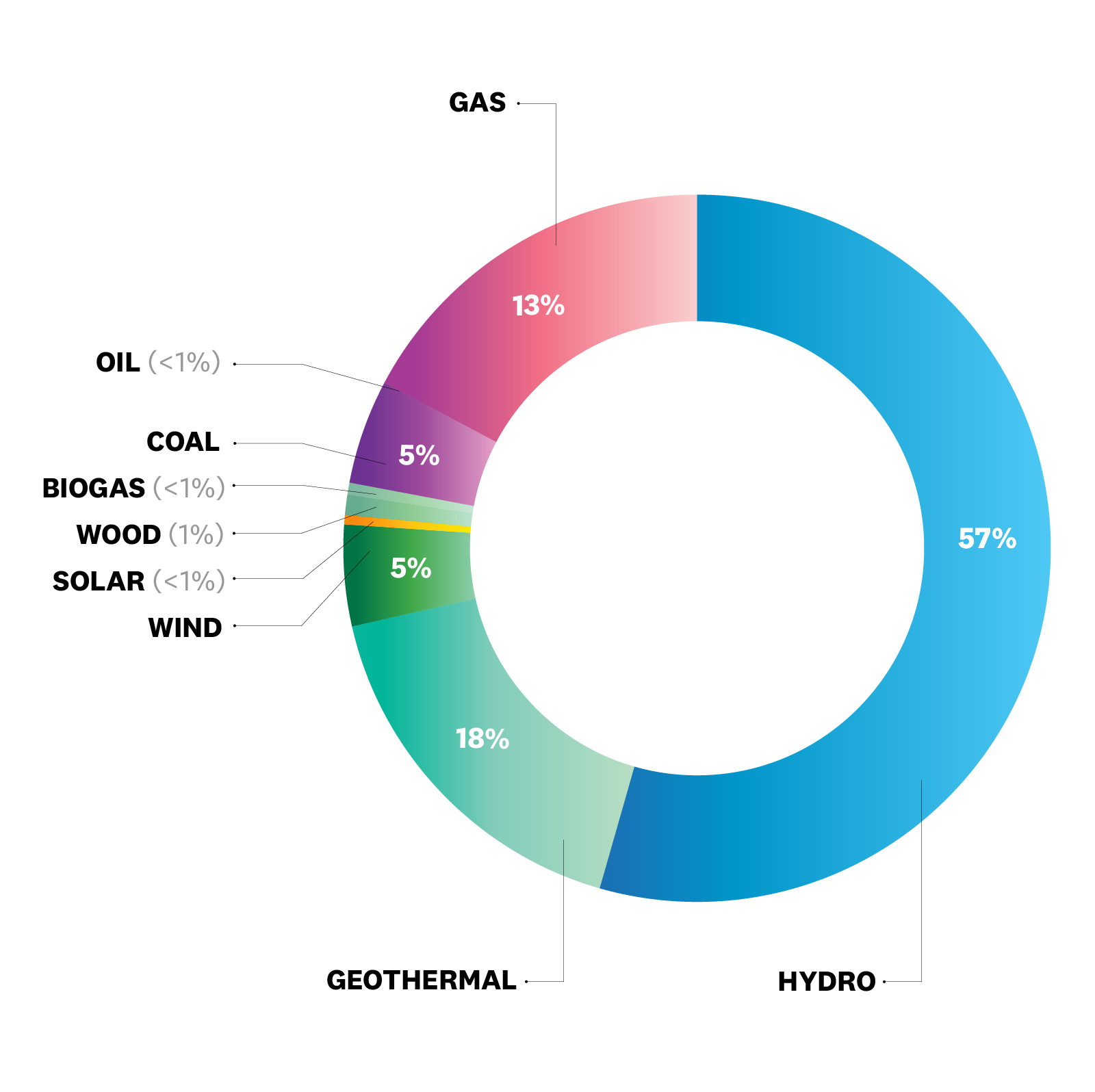
Projected electricity generation by 2035
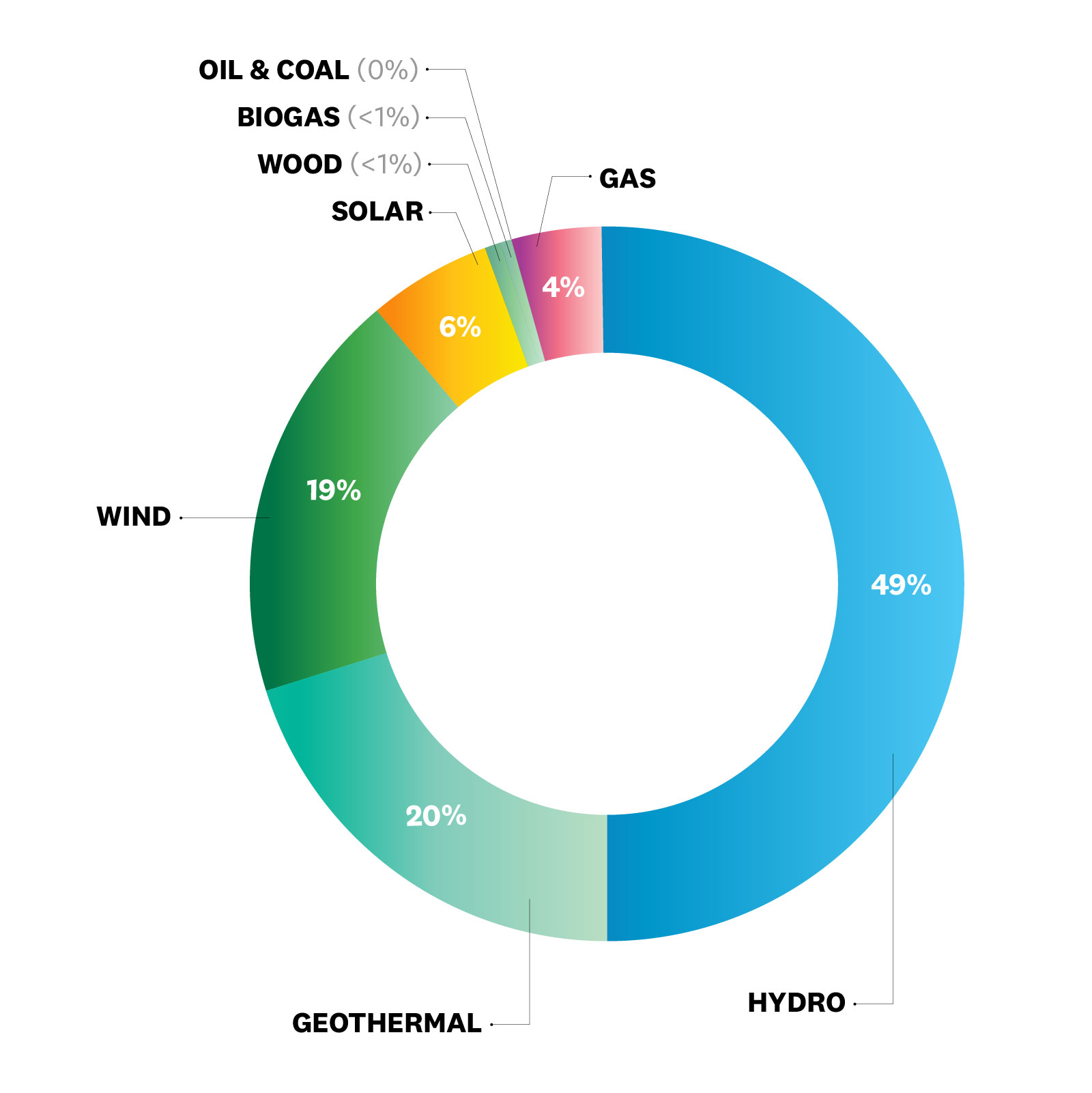
-
Recently, dry years have meant burning more coal...
In recent years, coal imports and generation have hit the headlines. In both 2021 and 2022 New Zealand experienced dry periods, where due to lower inflows into our hydro lakes, less electricity was able to be supplied through hydro generation. In 2021, coal use for electricity generation increased 29.5% to cover the shortfall. Overseas coal producers were able to supply additional coal more readily than local producers, so the additional coal was imported. -
...but its use is on the way out.
Since 2020, New Zealand has added two wind farms totalling 360 megawatts of capacity, and there are several other wind farms and geothermal stations under construction right now. As new renewable capacity is added, (or as existing uses become more efficient) we need less thermal (fossil-fueled electricity generation) to fill the gap. The projected electricity mix modelled above for the year 2035 takes into account increased generation capacity from new wind and solar plants as well as increased efficiency of electricity use.
Electricity supply and demand
Because electricity is difficult to store, it is generated at the same time it is used. Supply of renewable electricity is affected by things like how much water is available to our hydro dams, how windy it is where our turbines are, or whether it’s day or night (for solar generation).
Electricity demand varies over time, with much less needed overnight, and much more needed during morning and evening periods (called peaks), when lots of different uses coincide. The higher these peak periods, the harder it is to meet demand with renewable supplies, and the more we need to rely on fossil-fuelled generators to supply the electricity we need.
If we could shift some of our electricity use from peak times to off-peak times, then the overall shape of demand would be flatter, and more of our electricity needs overall could be met by renewable energy sources.
Daily peak electricity demand
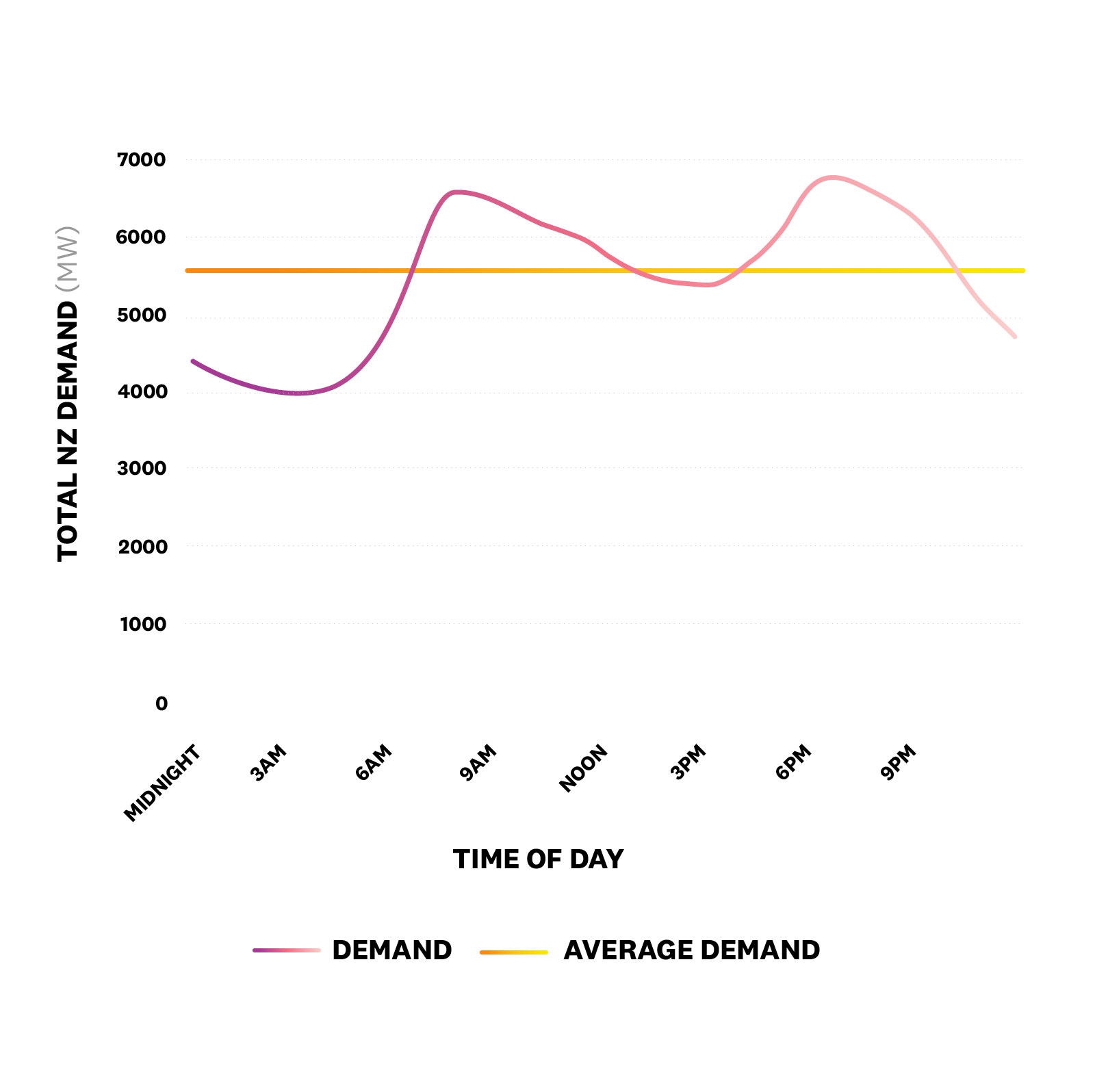
-
Off-peak
Overnight and weekends. During off-peak hours we can more easily generate enough electricity to meet demand, often using mainly renewable sources. Electricity prices are cheaper. -
On-peak
Weekdays, particularly around breakfast and dinner time. During times of peak electricity use, it is much more difficult to generate enough electricity to meet demand. We need to draw on more expensive sources, so prices go up.
Variable electricity pricing
Electricity retailers are increasingly offering the option of variable pricing plans. This means that they charge a lower rate for electricity at off peak times, passing on cost savings to consumers. Electricity is cheaper at off peak times because it is easier to find enough supply to meet demand.
What is electricity? And how does electricity get to my house?(external link)
For households with EVs in particular, variable pricing provides an extra incentive to time electricity use (ie, charge the car) during off-peak hours. Talk to your energy retailer about whether a variable pricing plan would suit you, or check your plan with Powerswitch.
The impact of EVs
Switching to an electric vehicle is a climate-friendly choice. EVs emit 80% less CO2 than an equivalent petrol vehicle in New Zealand because of our mostly-renewable electricity system. For a New Zealand household without an EV, transport typically accounts for around 37% of your carbon footprint, so making the switch adds up to significant emissions savings.
Learn more about EVs(external link)
But with a growing number of EVs being plugged into our electricity grid, we need to be smart about when we’re charging them. An EV can typically increase household electricity use by around 20-30%1, similar to hot water or space heating. Luckily, for most people it’s convenient to charge an EV overnight, when electricity is off-peak (and cheaper). If you have an EV or are considering purchasing one, a smart charger or home energy management system can help you keep your electricity use climate-friendly, and keep your costs down.
1 Modelled from Ministry of Transport fleet data and average energy consumption for EVs; and New Zealand household electricity consumption data from MBIE and the Electricity Authority.
What about industry and businesses?
New Zealand’s emission-reduction goals rely on industry, transport and commercial sectors switching from fossil fuels to cleaner renewable energy sources. In 2020, just 28% of our total final energy consumption (TFEC) was from renewable sources. The Government's first Emissions Reduction Plan sets a target of 50% TFEC from renewable sources by 2035. For industry, businesses, hospitals and schools for example, this may mean a technology switch such as upgrading a coal boiler to a cleaner and more energy-efficient biomass (wood chip) powered boiler, and in a lot of cases it will mean a switch to electricity – and connecting to the grid.
Total energy consumption (2021)
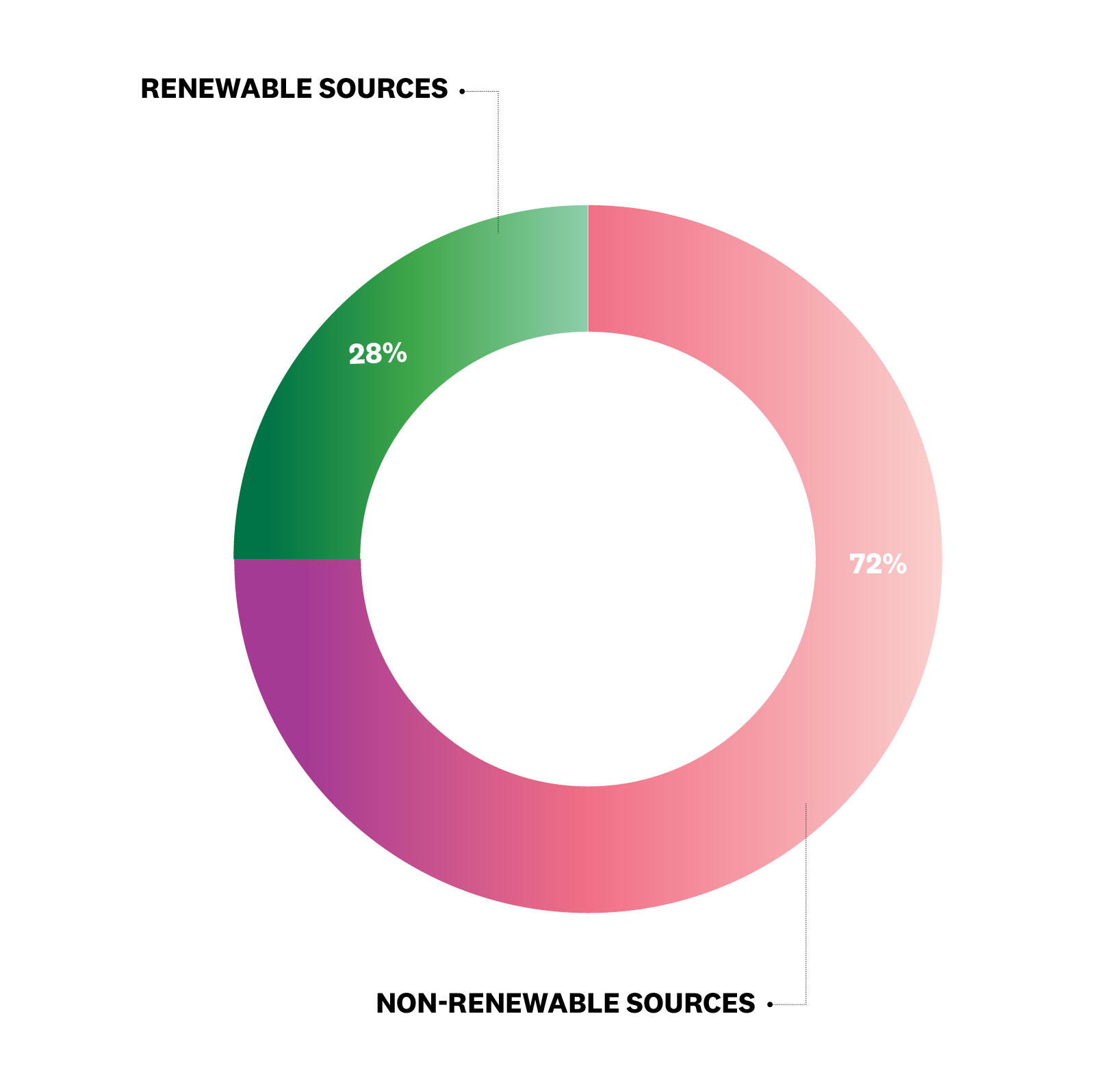
Current electricity demand
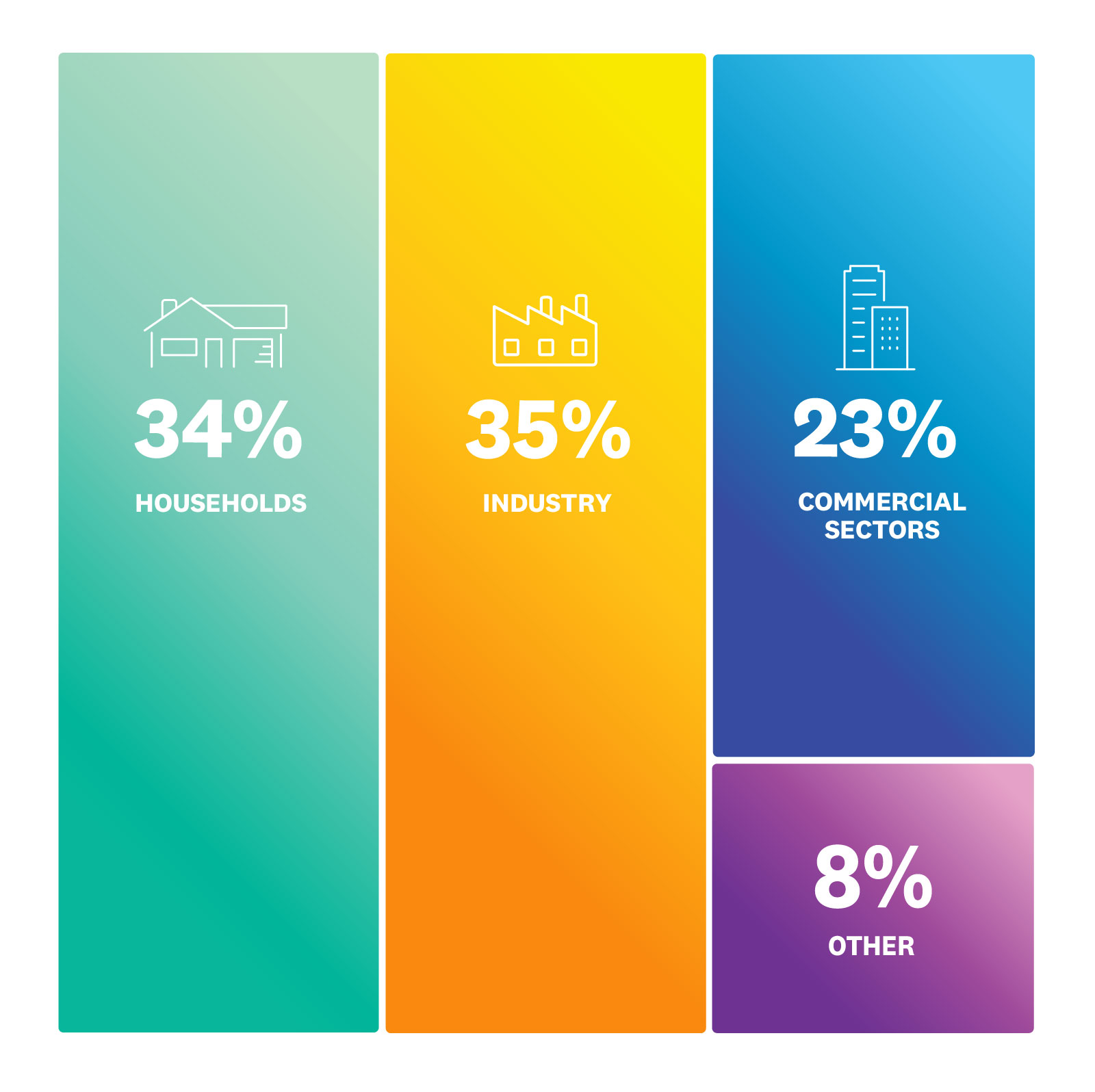
Fortunately our peak demand patterns are generally favourable to more industrial/commercial electricity use. Electricity use currently peaks in the mornings and early evenings when most people are home getting ready for the day or returning home from work and turning on ovens, heating, lights etc. The peaks are higher in winter because of heating.
For industry, it’s often during the day and in the summer months when most electricity is required. Businesses that use a lot of electricity often also have demand-response arrangements with electricity suppliers, and can lower their electricity use, or switch to alternative energy sources, when demand on the grid is high.
Increased use of variable pricing will provide a strong incentive for businesses to shift electricity use to off-peak times where possible.
Daily peak electricity demand by season

Smart energy use vs increasing energy generation
To meet increasing demand for electricity, we will have to generate more supply from renewable energy sources, and this work is already underway. There are several new wind farm projects in progress around the country, and plans to expand geothermal capacity in the central North Island. Investment in solar power is also increasing, for both large ‘grid-scale’ solar farms that feed into the system, and roof-mounted solar installations to help power individual businesses and households.
But investment in new infrastructure is not the only answer. It is expensive, and development can take many years. The cost is ultimately passed on to consumers. It’s estimated that only around 40% of our household power bills are based on how much electricity you use. The remaining 60% is associated with ‘delivering’ electricity to the home, a cost that will increase for all kiwi homes with large grid infrastructure.
Another consideration is that wind and solar are also what’s known as ‘intermittent’ power sources. This means that electricity can only be generated from these sources when the wind is blowing and the sun is shining. As New Zealand’s reliance on wind and solar power increases, this will have an impact on the times of day when renewable electricity is plentiful.
By being smart about how and when we use electricity, we can make our renewable electricity resources go a lot further – now and into the future.
How to be smart about electricity use
-
Insulate your home
Heating accounts for around a third of household electricity use in New Zealand, and contributes to our seasonal electricity peaks in winter. With good insulation, you can reduce the amount of heating you need.
-
Choose efficient appliances
Efficient appliances use less electricity and help to reduce our overall electricity demand. Using appliances in off-peak times where practical also makes a difference.
-
Use LED lighting
Lighting contributes to our early morning and evening peak electricity use, so it helps if lighting is as efficient as possible.
-
Charge your EV overnight
EVs use a lot of electricity, so it’s best to charge them overnight when demand on the grid is low.
-
Make your home a ‘smart home’
Smart home technology automatically optimises electricity use to relieve pressure on the grid, and helps you take advantage of low-cost electricity.
-
Explore solar energy
As the cost of solar installations comes down, and household electricity demand goes up, home electricity generation is likely to become increasingly attractive to homeowners
Continue reading
-
New Zealand's emissions
Climate change is an issue for New Zealand, and for New Zealanders. Here's a look at what that means for us, and how we're tracking as a country.
-
Calculate your carbon footprint
Understanding your carbon footprint is a great place to start when it comes to tackling climate change.
-
The Emissions Trading Scheme explained
Find out how the Emissions Trading Scheme works and what impact it has on you.
